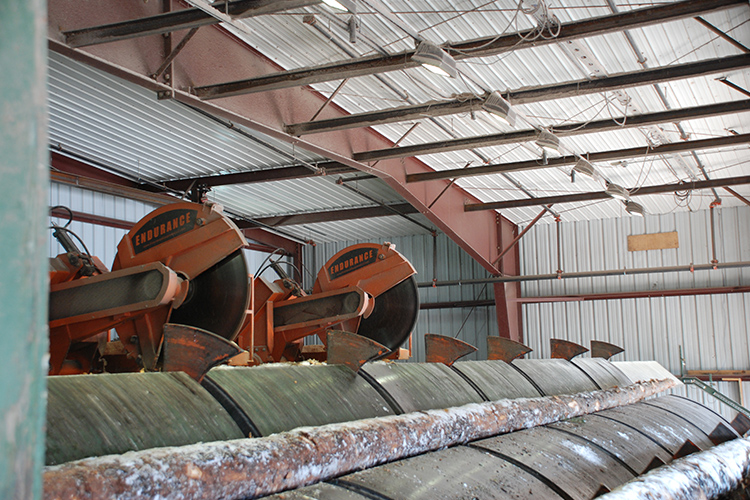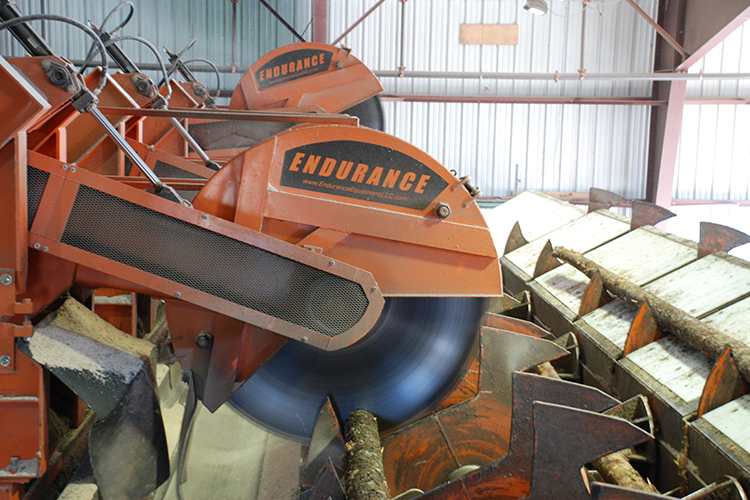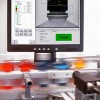Accelerating Lumber Production with Machine Vision
Finding the right imaging component was a key step for one New England-based company. Now, its automated sawing operations have completely transformed the way it does business.
If a tree falls in a forest, and a certain kind of person is there to see it, the ensuing discussion is not likely to focus on philosophical concerns. Indeed, for someone in the forest products industry, more relevant interests will be connected to what type and grade of wood that tree represents, and then finding the most efficient way to cut it to derive the maximum benefit from the material.
The market for lumber is in a constant state of flux. Factors such as the time of year and current customer demand compound the necessity for mills to be highly efficient to stay competitive—and this efficiency must start almost immediately after a tree hits the ground.
Machine vision systems provide one important way for the industry to compete. They can be used in tandem with automatic grading applications, for example, in which image data is analyzed to locate and identify wood defects that can manifest themselves in a variety of ways.
But for those and other related systems to be truly useful, they must be able to process lumber at least as fast and accurately as a skilled human grader or saw operator.
Still, of all the components that comprise such a system, the one that can be the most challenging to get right is the underlying camera technology itself—a lesson well learned by a New England-based mill with deep roots in the industry.

A Rich but Inefficient History
A family-owned business with four generations of experience in the forest products industry, Pleasant River Lumber produces more than 100 million board feet of spruce and eastern white pine dimensional lumber annually from its three mills in Dover-Foxcroft, Hancock, and Enfield, Maine. The company’s reputation has evolved from its commitment to producing the highest quality product on the market. To that end, it prints an American flag and the grader’s name on all the lumber it produces.
In Pleasant River Lumber’s original approach to lumber processing, tree-length logs—up to 64-feet long, the most economical for a mill to purchase—were delivered to the mill yard where five large circular saws known as “slashers” cut them into 16-foot lengths, usually leaving only a short piece as waste.
“Since the entire process was done manually on multiple logs at the same time, there was no optimization of the material or of the time and effort required to process it,” explains Christopher Brochu, one of the six partners who operate Pleasant River Lumber. “A human being made a decision as to where to cut each log, and it was impossible to determine accurately how to cut the log to get the greatest value from the material.”
In addition, operating the slashers themselves was expensive in terms of fuel and labor costs, and the company lost money on the waste material, which often had to be trucked away from the site.

Getting a Better View
When Pleasant River Lumber purchased its Dover-Foxcroft mill in 2004, the partners committed to a $12M investment to modernize the facility, including the part that processed logs for milling. Recognizing the benefit of using technology for improved productivity and efficiency, the partners turned to outside expertise to design and implement a unique, hybrid system using best-in-class solutions from a number of vendors.
The new process begins in the mill yard. Six ceiling-mounted color cameras are coordinated to take images of each tree-length log. Those images are stitched together by software that also calculates the length and diameter of each log, with accuracy to within one inch.
But that level of efficiency—or exactness—wasn’t present initially. The system’s original design used cameras from a different manufacturer, and there were problems with them from the start. The cameras didn’t offer a way to capture a clear view of an entire log, for one thing, and that was critical to getting the accurate measurements needed to ensure that the rest of the system operated as required. There were also challenges with the camera’s ability to operate in a rugged mill environment where conditions—particularly lighting—changed frequently. One wall of the facility is open to the elements, which means that lighting, temperature, and even wind can vary from hour to hour.
The vision system in place now offers automatic ambient light detection and can change the exposure time quickly to provide the right level of contrast between the log and the background for each image. And new LED lighting has been installed overhead to enable greater consistency in the imaging.
With better cameras, the mill can now properly focus on achieving the results it wants. Data about the length and diameter of each log integrates with a new “bucking system”—equipment including log singulators and saws that form the majority of the new production system. This part analyzes the data from the vision system, determines the optimum location for each cut, and then saws each tree-length log in a process that is fully automated.
The Benefit of the Right View
Since the new system was implemented, the change has been so significant that Pleasant River Lumber’s partners see few similarities between the new production process and the previous approach. In particular, they note that the vision system has helped them meet several of their key objectives, beginning with determining the accurate length and diameter of each tree.
“Our production capacity is so much greater today,” says Pleasant River partner Jason Brochu. “The system is able to calculate the measurements of each tree-length log in about seven seconds, or evaluate about nine logs per minute.”
“This is nearly ten times faster—and far more accurate—than our previous process.”
It wasn’t a stated objective of the project, but Pleasant River Lumber is committed to ensuring the health and sustainability of Maine’s forests, and the new system supports this mission by virtually eliminating waste.
“All lumber processing is now done at a central location, so we can capture everything from the small pieces that can’t be used in production lumber to the sawdust and bark,” Christopher Brochu notes. “Then we can sell it all at a profit to get value for every byproduct of the system. We now have a zero-waste operation, which aligns with our environmental goals, and gives us a new revenue stream.”

Seeing a Competitive Advantage
Lumber is a commodity, and so the product itself has little to differentiate it from competitive solutions. Pleasant River Lumber’s new automated system gives the company differentiation in the marketplace, however, in that the dimensions of the lumber produced can be changed quickly to meet market conditions. For example, if certain lengths and dimensions are in greater demand—and so are selling at a better price—Pleasant River Lumber can cut its logs accordingly, meeting the demand sooner.
“The vision system is a key element in a new lumber production system that has completely transformed the way Pleasant River Lumber does business.”
“Our new production system has made us more efficient, more productive, and more nimble,” says Jason Brochu. “Because we can work quickly and accurately, we have the flexibility needed to change the lengths as often as we need to to adjust to the current market. With our old system, changing the length of the logs we cut was virtually impossible.”



 Vision Systems – What you need to know
Vision Systems – What you need to know  A Perfect Vision of Food Production
A Perfect Vision of Food Production 